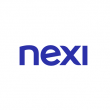Not how, but where: the next payments revolution
It is hard to reconcile the saga taking place in the cryptocurrency market today with the idea that the role of digital assets in the global financial system will become ever more important.

By 2026, an estimated 25% of people will spend an hour in the metaverse each day
In fact, the headline-grabbing events that have shaken confidence in the sector – the bankruptcy of the FTX exchange being the most recent and obvious example – might very well make the case that the crypto experiment has failed.
Lack of regulatory oversight and consumer protections and poor corporate governance have contributed to the rapid (although not altogether surprising) demise of several industry titans this year.
Recent events have also highlighted something of an irony for crypto – in an industry designed to remove the need for trust in financial services, trust has been at the centre of each of these collapses; first too much trust, then too little.
So does this mean the end for crypto?
Your perspective on this question depends on what ‘crypto’ means to you. For many people, crypto has become an investment asset – a speculative bet on some blockchain or protocol or online community. The vast number of exchanges for trading crypto in operation today (even after the spectacular fall of one of the biggest) demonstrates just how pervasive the ‘crypto as an investment’ idea is these days.
However, it seems likely that confidence in crypto as an investment will take some time to recover. And, as of right now, it’s possible that it may never recover to the levels we’ve seen previously; at least, not without some fundamental changes to how crypto exchanges are managed and overseen by regulators.
But there is another, arguably more important, use case for crypto. The use case for which the original cryptocurrency – Bitcoin – was intended: payments.
For the purpose of this article, I’d like you to forget about prices and profits and instead think about crypto in simpler terms: as digital value transferable on a blockchain ledger.
Whether the value of cryptocurrencies is derived from market forces (like Bitcoin and Ether) or from being pegged to other assets such as fiat currency, loyalty points for a particular retailer, or player points for a game, this value can and will be exchanged online for other things of value.
Over recent years, we’ve witnessed a rapid evolution in the means and method of exchange. However, the next big evolution in payments will not be in how, but in where payments take place – with predictions that between 15 and 33% of global digital spending will eventually take place within online ‘metaverses’.
A brief history of payments
Go back to a few hundred years BC and humans were using a method of exchange that I predict we will return to in principle. ‘Currency’ was generally thought to have its own inherent value, such as precious metals – useful in many ways other than simply as coins and bullion.
The first significant change in physical currency was promissory notes, which came about around 1,000 years ago in China. These represented physical currency but were not themselves the things of value. This is the same idea behind our modern banknotes today, which really just represent a claim on a bank’s balance sheet.
Fast-forward to the introduction of digital systems, along with the abandonment of the ‘gold standard’ – likely within the living memory of many readers – significant in that modern currencies ceased to be pegged to a physical asset at this point. Fast-forward again and most people will remember the advent of crypto within the last 20 years.
The reason for this brief history lesson is that it is interesting to think of crypto as a reversion to the principles of physical currency. If you hold a Bitcoin, that is not a claim on some gold held by a bank or on a bank’s balance sheet. It has value in and of itself. For the first time since the emergence of promissory notes, the unit of currency is once again the actual thing of value.
Payments in the metaverse
Throughout 2022 we experienced the mainstreaming of the term ‘metaverse’, catalysed by the parent company of Facebook changing its name to Meta in October 2021. In its simplest form, the metaverse is an online extension to real life: a series of interconnected virtual worlds in which we will live, work, shop, and interact.
While still in their early stages, the best-known metaverse platforms, like Decentraland and The Sandbox, are not fringe movements and are being watched closely by traditional banks and financial services firms. JP Morgan, one of the Wall Street banks initially most critical of crypto, has a ‘branch’ in Decentraland. Meanwhile, games like Fortnite and Roblox have been likened to ‘proto-metaverses’.
By 2026, an estimated 25% of people will spend an hour in the metaverse each day and 30% of companies will offer services and products for the metaverse.
So where will the next evolution of payments take place? The metaverse is not one uniform entity. There will be multiple realms subscribing to different principals.
For metaverses built on web2 principals that are intermediated and still rely on middlemen, users will find ‘traditional’ payment types like PayPal and Apple Pay. Similarly, we also see examples emerging of native tokens like Fortnite’s V-Bucks and Roblox’s Robux: but these are still intermediated, in that the ledger is managed by the owners of Fortnite.
But what’s really exciting about the metaverse for payments is the emergence of the web3 principled versions of it – those that are owned and controlled by their users that rely on external peer-to-peer mechanisms. That’s where there are still unknowns around native decentralised currencies that could significantly influence how users spend assets in those realms.
Just as most nations issue their own currencies today, the future will bring many metaverse ‘realms’ operating across borders, each with their own currencies or tokens. Interoperability therefore – along with global standards and regulation – will be critical as metaverses break down borders and we find new ways to trade, play, and interact with one another – unrestricted by our physical whereabouts.











































